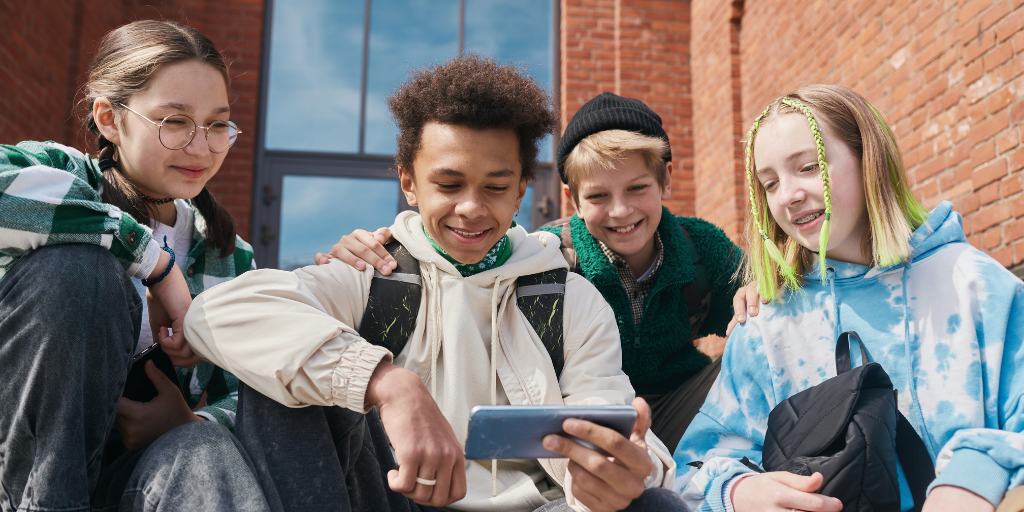
A new school year doesn’t just mean backpacks and bus rides. It often comes with a new phone or tablet, new social circles, and more opportunities for unsupervised time online. That’s a perfect storm for kids to encounter digital risks, many of which parents never see coming.
At BrightCanary, we use real-time monitoring and AI to help parents understand what their kids are actually doing online. Based on what we’ve seen kids searching for and typing into their devices, here are five digital dangers to watch for this school year, broken down by age.
What we’ve seen: We’ve flagged messages and searches from kids expressing feelings of sadness, isolation, anxiety, and hopelessness, often late at night.
What it is: Algorithms on platforms like Instagram, TikTok, and YouTube tend to serve up more of what a child interacts with. That means one post about depression can quickly spiral into a feed full of triggering or glamorized content about self-harm, eating disorders, or suicidal ideation. As many as 41% of girls see suicide-related content on Instagram every month.
What’s worse: Kids often hide this behavior. We’ve seen searches phrased in vague or coded terms, like “unalive” or “d13” for feelings about suicidal ideation.
How it can show up by age:
What we’ve seen: We’ve flagged instances of teens having explicit conversations with adults online.
What it is: Online grooming happens when a predator builds trust with a child in order to exploit them sexually. These interactions often start in social apps or games with chat features, like Roblox, Reddit, or Minecraft.
Predators are skilled at targeting vulnerabilities. They may compliment your child or offer support to get them on their side. If your child has a public profile or uses apps without strict age restrictions, they’re more exposed.
How it can show up by age:
What we’ve seen: We’ve flagged conversations where teens mention drug slang, ask where to buy alcohol, or joke about using drugs. There have also been reports about drug dealers using social media platforms to arrange sales.
What it is: From vaping in the bathroom to buying drugs on Snapchat, substance use is rampant in schools. Kids can be exposed to drug-related content earlier than many parents realize, whether it’s memes glamorizing weed, peers using slang like “gas” or “snow,” or influencers normalizing casual drinking.
Some dealers even use secret messaging apps to advertise and arrange drug deals, making it harder for parents to spot the warning signs.
How it can show up by age:
What we’ve seen: We’ve caught messages where kids were told to “KYS” (“kill yourself”), targeted in toxic group chats, or even initiated bullying via direct messages.
What it is: Cyberbullying takes many forms, like name-calling, exclusion, harassment, doxxing, or spreading memes at someone’s expense. As many as 90% of teens have been bullied online, so it’s more common than you might think. And because it happens in group chats, DMs, and disappearing messages, it often flies under the radar.
How it can show up by age:
What we’ve seen: Kids sharing their full names, locations, and school names in chats, often without realizing how dangerous that can be.
What it is: Many kids don’t think twice about sharing personal details online. But doing so can expose them to predators, online scams, and doxxing. Even casual details in an Instagram caption can help someone track them down in real life or use their personal details against them.
How it can show up by age:
It’s hard to protect your kids from what you don’t understand. Stay up to date on emerging apps, trends, and online behaviors (that’s what we’re here for).
Talk regularly with your child about what they’re seeing online. Use open-ended questions, and avoid jumping to conclusions. The goal is connection, not control.
Make clear rules around screen time, privacy settings, and what’s okay to share. Revisit these rules as your child gets older and their digital life evolves.
BrightCanary gives you real-time summaries of what your child types online. Our keyboard-based monitoring works across every app they use on their iPhone or iPad, even if they use incognito mode or secret accounts.
If something feels off, trust your gut. You can reach out to teachers or school administrators, report behavior on social platforms, and contact authorities if there’s a serious risk.
Back-to-school season isn’t just about pencils and planners; it’s a key moment to check in on your child’s digital life. The online world they navigate is complex and ever-changing. But with awareness, conversation, and the right tools, you can help them stay safer this school year.
BrightCanary makes it easier. Our AI-powered monitoring alerts you to red flags and gives you a clearer picture of your child’s digital world so you can parent with confidence.